Through research, new treatments for GBS are continually being identified Key points about GuillainBarré syndrome GuillainBarré syndrome (GBS) is a neurological disorder in which the body's immune system attacks part of the peripheral nervous system The onset can be quite sudden and unexpected It requires immediate hospitalizationBox 1 GuillainBarré syndrome (GBS) is an acute generalized polyneuropathy affecting 1 to 2 out of 100,000 people per year More men than women are affected (1251), and the syndrome may occur in patients of any age, typically affecting patients ages 40 to 50 years, although incidence is increased by % for every 10year increase in age 1 GBS can be classified into three mainPlasmapheresis or immunoglobin therapies are treatment options available for this syndrome but are most effective when given within 4 weeks of the onset of symptoms Which tests below can be ordered to help the physician diagnose GuillainBarré Syndrome?
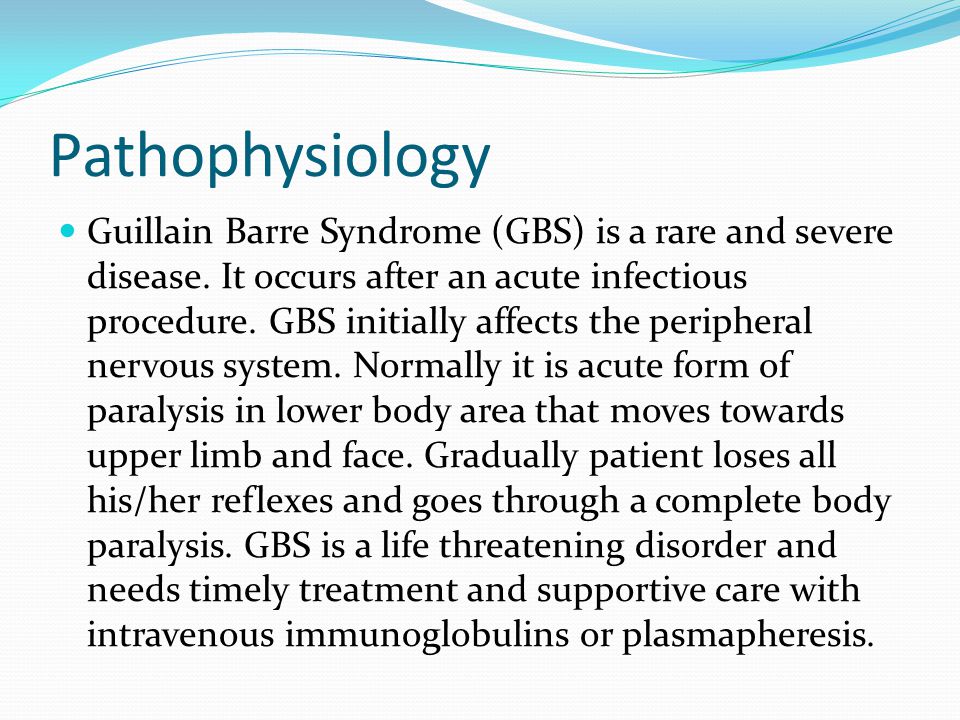
Guillain Barre Syndrome Ppt Download
Guillain barre syndrome treatment options
Guillain barre syndrome treatment options-Treatment Options for COVID19–Related GuillainBarré Syndrome A Systematic Review of Literature Conclusions Although evidence to support specific treatments is lacking, clinicians should consider the benefits of immunotherapy and plasma exchange in addition to the standard antimicrobial and supportive therapies for patients who meet the diagnostic criteria for acute14/6/21 The natural treatment of Guillain Barre Syndrome insists on treating the damage nerves that triggers numbness or paralysis There are few herbal medicines like TrayodashangGuggulu, Panch Tikta Ghrut Guggulu, Kaishor Guggulu, and Yograj Guggulu that are rarely used or treating symptoms of Guillain Barre Syndrome




Infusion Therapy Treatment For Guillain Barre Syndrome Gbs Infusion Associates
15/7/21 The CDC describes GuillainBarré (pronounced GheeYAN BahRAY) syndrome as a rare autoimmune disorder in which a person's own immune system damages the nerves, causing muscle weakness, andGuillain Barré syndrome – pronounced GEEYan BuhRAY – is a rare condition in which your immune system attacks your nerves Although several types of the condition occur, in the United States, Guillain Barré syndrome (GBS) most often affects the peripheral nerves that connect your brain and spinal cord to the rest of your bodyTreatment for GuillainBarré Syndrome Patients with GuillainBarré syndrome have better recovery if they are given one of two treatments to calm their immune system plasma exchange (also known as plasmapheresis) or intravenous immunoglobulin Both are equally effective, but intravenous immunoglobulin is easier to give
GuillainBarré (GheeYAN BahRAY) syndrome (GBS) is a rare, autoimmune disorder in which a person's own immune system damages the nerves, causing muscle weakness and sometimes paralysis GBS can cause symptoms that last for a few weeks to several years Most people recover fully, but some have permanent nerve damageBased on clinical manifestations and results of CSF analysis, GuillainBarré syndrome was diagnosed Jack remained in clinic, because he could not walk Regular monitoring of his heart and pulmonary functions was performed For the treatment, the course of opioid painkillers and five procedures of plasma exchange were allocated1/2/13 GuillainBarré syndrome consists of a group of neuropathic conditions characterized by progressive weakness and diminished or absent myotatic reflexes The estimated annual incidence in
30/9/19 GBS Guillain Barre Syndrome is a rare autoimmune condition that damages the myelin sheath of nerves It can cause a multitude of symptoms ranging from simple nerve damage to paralysis IVIG treatment can be given as ambulatory or nonambulatory infusions Ameri Pharma offers both types of solutionsIntroduction GuillainBarré syndrome (GBS) is an acute, frequently severe, and fulminant polyradiculoneuropathy that is autoimmune in nature collection of clinical syndromes that manifests as an acute inflammatory polyradiculoneuropathy with resultant weakness and diminished reflexes 4 1 to 2 per 100,000 population/9/19 The Erasmus Guillain–Barré syndrome (GBS) Respiratory Insufficiency Score (EGRIS) calculates the probability that a patient with GBS will require mechanical ventilation within 1
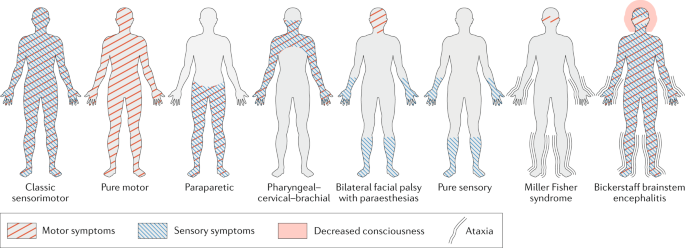



Diagnosis And Management Of Guillain Barre Syndrome In Ten Steps Nature Reviews Neurology




Prevalence And Outcomes Of Guillain Barre Syndrome Among Pediat Ndt
SUPPORTIVE CARE Supportive care is extremely important in GuillainBarré syndrome (GBS) since up to 30 percent of patients develop neuromuscular respiratory failure requiring mechanical ventilation 1 In addition, autonomic dysfunction may be severe enough to require intensive care unit (ICU) monitoring 2 GuillainBarre syndrome (GBS) is an acquired disease of the peripheral nervous system which causes demyelination and leads to weakness, ataxia, and areflexia There are a variety of forms of the syndrome, and although it is found in all age groups, it is rare in children less than two years of ageIntravenous immunoglobulin (IVIG) The most commonly used treatment for GuillainBarré syndrome is intravenous immunoglobulin (IVIG) When you have GuillainBarré syndrome, the immune system (the body's natural defences) produces harmful antibodies that attack the nerves IVIG is a treatment made from donated blood that contains healthy antibodies




Original Research Second Ivig Course In Guillain Barre Syndrome With Poor Prognosis The Non Randomised Isid Study Journal Of Neurology Neurosurgery Psychiatry



Guillain Barre Syndrome
7/9/21 Ninetynine percent of patients were diagnosed with COVID19 before diagnosis of GBS (median 14 d prior, interquartile range 7 to ) Intravenous immunotherapy (intravenous immunoglobulin 04 g/kg/d for 5 d) was the most frequently used treatment approachGuillainBarré syndrome (GBS) is a rare, rapidly progressing neurological disorder that causes the body's immune system to attack parts of its peripheral nervous system Fewer than 6,000 people a year in the US develop GBS, according to the Centers for Disease Control1168 Overell JR, Hsieh ST, Odaka M, et al Treatment for Fisher syndrome, Bickerstaff's brainstem encephalitis and related disorders




Clinical Variants Of Guillain Barre Syndrome In Children Pediatric Neurology
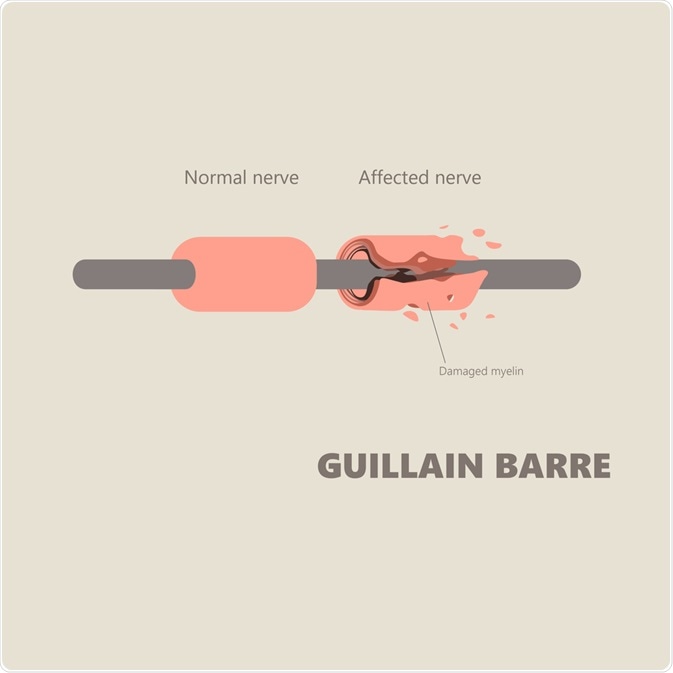



Guillain Barre Syndrome Treatment
Request PDF Treatment Options for COVID19–Related GuillainBarré Syndrome A Systematic Review of Literature Background Central nervous system complications are reported in11/9/21 GuillainBarré syndrome (GBS) is a rapidly progressive and potentially lifethreatening polyradiculoneuropathy that requires early diagnosis, monitoring and treatment1, 2 Plasma exchange (PE, usually 0–250 mL/kg in five sessions) and intravenous immunoglobulin (IVIg, 04 g/kg for 5 days) are proven effective treatments for GBS3, 4 IVIg may be considered first choice treatment24/3/ GuillainBarré syndrome (GBS) is an autoimmune disorder that affects the nerves In autoimmune diseases, the immune system mistakenly attacks the body's own cells and tissues as if they were foreign invadersIn GBS, the target of this erroneous attack is the peripheral nerves




Prevalence And Outcomes Of Guillain Barre Syndrome Among Pediat Ndt
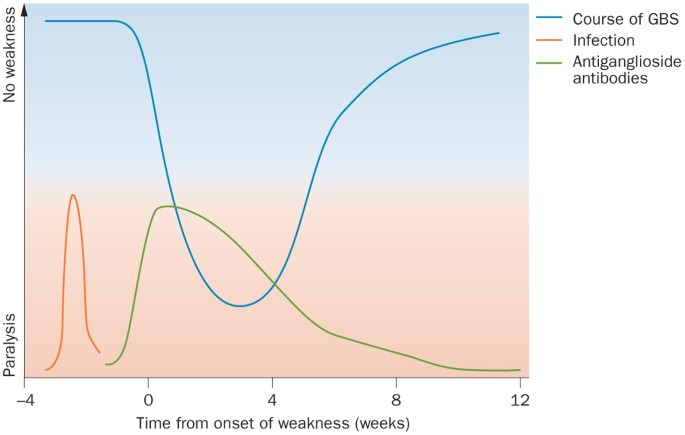



Guillain Barre Syndrome Pathogenesis Diagnosis Treatment And Prognosis Nature Reviews Neurology
Intravenously administered immunoglobulin in the treatment of childhood GuillainBarré syndrome a randomized trial Pediatrics 05;There is no cure for GuillainBarre syndrome A cure is a medication or treatment that brings a disease to an end There are treatments which can help reduce the severity of GuilllainBarre29/1/19 Nine pediatric severe GuillainBarré syndrome patients requiring mechanical ventilation were treated with novel treatment strategy named as "zipper method" In this method, following diagnosis of GuillainBarré syndrome, plasma exchange was started immediately



Www Aetnabetterhealth Com Pennsylvania Assets Pdf Pharmacy Pharmacy Bulletins 0732 guillain barre syndrome treatment Pdf




Overview And Treatment Of Guillain Barre Syndrome Gbs Treatment Options For Gbs Plasma Exchange Pdf Document
23/7/21 Researchers at Mayo Clinic are working to find new diagnosis and treatment options for people who have GuillainBarre syndrome and related conditions Read more about research in Cerebrovascular and Critical Care Neurology at Mayo ClinicCOVID19–related GuillainBarré syndrome (GBS) Hence, the effects of more aggressive treatment options including plasmapheresis and convalescent plasma exchange should be examined further for this group of highrisk patientsGuillain Barre Syndrome associated with COVID19 Infection A Case Report Here, we report a case of a 64yearsold female patient with typical clinical



Guillain Barre Syndrome Fact Sheet Dig Jamaica




Guillain Barre Syndrome American Family Physician
GuillainBarré syndrome is an autoimmune condition in which the person's nerves are attacked by the body's own immune defence system As a result of the attack, the nerve insulation (myelin) and sometimes even the inner covered part of the nerve (axon) is damaged and signals are delayed or otherwise changedTreatment required for GBS ranges from the full panoply of modern intensive care in severely paralysed ventilated patients to gentle reassurance in an outpatient setting in patients with minor sensory symptoms and signsFALSE GuillainBarré Syndrome is an autoimmune neuro condition where the immune system attacks the nerves in the PERIPHERAL NERVOUS SYSTEM and cranial nerves This condition does NOT occur in the central nervous system (CNS) 2 During nursing report you learn that the patient you will be caring for has GuillainBarré Syndrome
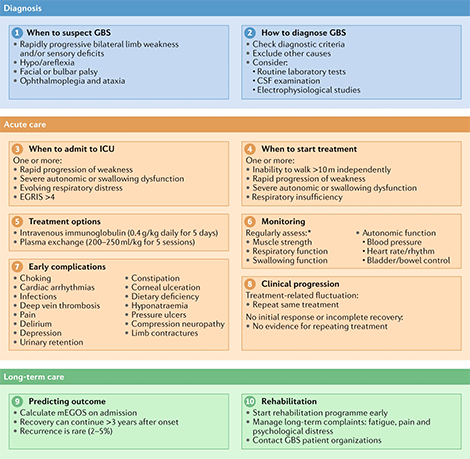



Nature Reviews Neurology Publishes Zikaplan Supported Landmark Paper Diagnosis And Management Of Guillain Barre Syndrome In Ten Steps Zikaplan



1
Guillain Barre Syndrome Treatments Clinical Policy Bulletins Medical Clinical Policy Bulletins Last Review Effective Next Review Review History Definitions Additional Information Clinical Policy Bulletin Notes Number 0732 *Please see amendment for Pennsylvania Medicaid at the end of this CPB It remains an urgent need for early recognition of disease severity, treatment option and outcome of GuillainBarré syndrome (GBS) The chief complaint may be quickly obtained in clinic and is one of the candidates for early predictors30/4/ The cause of GuillainBarre syndrome is unknown, but it is often preceded by an infectious illness, such as a respiratory infection, or the stomach flu If you're suffering from GuillainBarre Syndrome there are several treatment options available to help ease your symptoms Types of GuillainBarre Syndrome




09 Conquering Guillain Barre Syndrome Gbs The Empowered Patient S Complete Reference Diagnosis Treatment Options Prognosis Two Cd Rom Set Pm Medical Health News Amazon Com Books




Guillain Barre Syndrome And Myasthenia Gravis Chapter 43 Gupta And Gelb S Essentials Of Neuroanesthesia And Neurointensive Care
Guillain–Barré syndrome is a rapidonset muscle weakness caused by the immune system damaging the peripheral nervous system Typically, both sides of the body are involved, and the initial symptoms are changes in sensation or pain often in the back along with muscle weakness, beginning in the feet and hands, often spreading to the arms and upper body The symptomsGuillainBarré syndrome with respiratory failure aff ects –30% of cases Treatment with intravenous immunoglobulin or plasma exchange is thePlasma exchange was the first treatment in GuillainBarrd syndrome proven to be superior to supportive treatment alone and intravenous immunoglobulin was subsequently shown to be equally effective and is now commonly used as firstline treatment




Diagnosis And Management Of Guillain Barre Syndrome In Ten Steps Nature Reviews Neurology




Pdf Diagnosis And Management Of Guillain Barre Syndrome In Ten Steps Semantic Scholar
Discussion includes defining GBS as well as its etiology and differential diagnosis Patients with GBS are not uncommon, and therefore it is important to be educated and to have a more precise understanding GBS patients need to be treated holistically through emotional and physical support and known effective treatments19/1/21 Treatment and Medication Options for GuillainBarré Syndrome There is no cure for GBS, but there are treatments that can reduce the severity of the illness and help speed up recovery People withSummary Guillain barre syndrome is found among people who take Repatha, especially for people who are male, 60 old, have been taking the drug for 1 6 months The phase IV clinical study analyzes which people take Repatha and have Guillain barre syndrome It is created by eHealthMe based on reports of 95,144 people who have side effects when
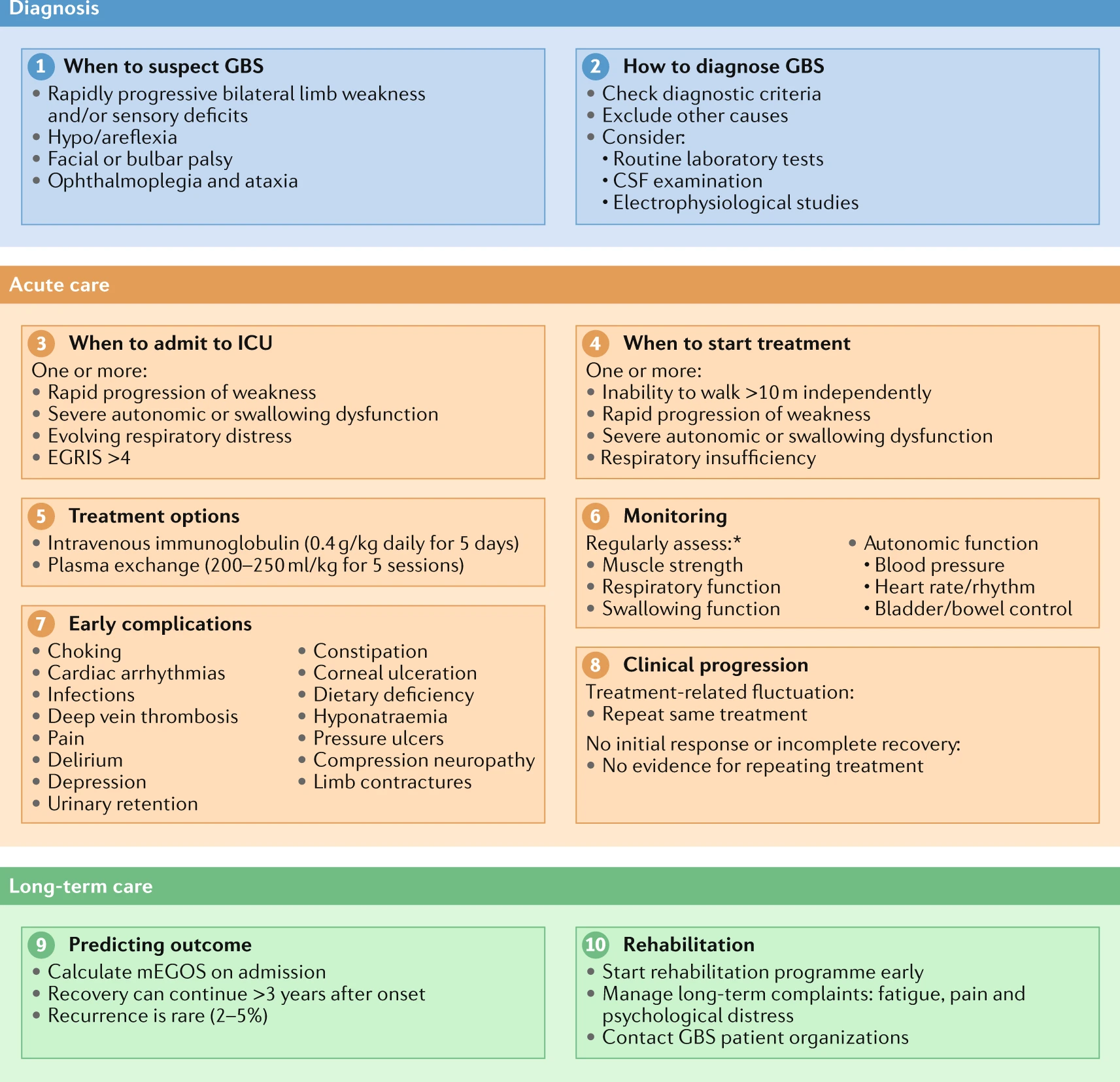



Update From The International Guillain Barre Syndrome Outcome Study Igos Gbs Cidp Foundation International




Pdf Rehabilitation In Guillian Barre Syndrome
17/8/ There is no cure for GuillainBarré syndrome There have been treatments that seem to help with the length of recovery and help reduce the symptoms Medical management is done through plasmapheresis and immunoglobulin therapy 1 Physiotherapy also plays a large role throughout the entire progression of GuillainBarré syndromeGuillainBarre syndrome is not very common This is because only about 1 in 50,000 people develop this condition each year The majority of theseGuillainBarré syndrome is a serious disorder that occurs when the body's defense system mistakenly attacks part of the nervous system This Treatment options There is no cure for GuillainBarré syndrome However, many treatments are available to help reduce symptoms,



1




Pdf Guillain Barre Syndrome In Children




Review Article On Covid 19 And Guillain Barre Syndrome
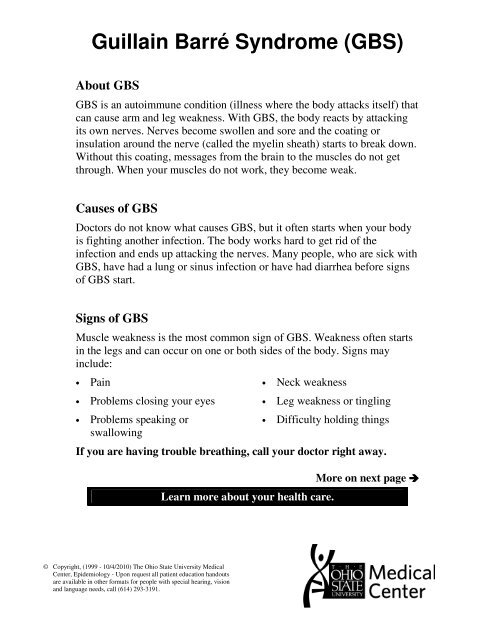



Guillain Barre Syndrome Gbs Patient Education Home




Peripheral Neuropathies Including Guillain Barre Syndrome Gbs Neurology Harrisons Manual Of Medicine 18th Ed




Efficacy Of Therapies In The Treatment Of Guillain Barre Syndrome A Network Meta Analysis Medrxiv
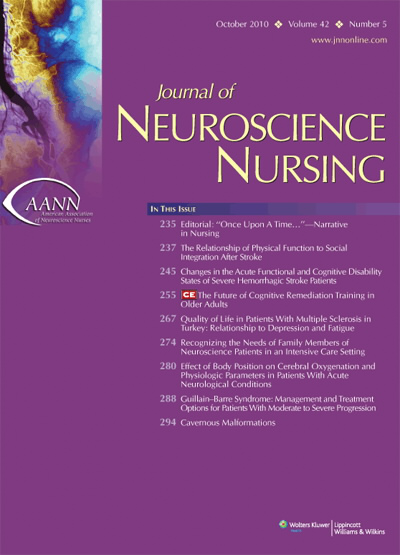



Guillain Barre Syndrome Management And Treatment Options For Patients With Moderate To Severe Progression Article Nursingcenter




Guillain Barre Syndrome Gbs Toolkit Comprehensive Medical Encyclopedia With Treatment Options Clinical Data And Practical Information Two Cd Rom Set U S Government Amazon Com Books
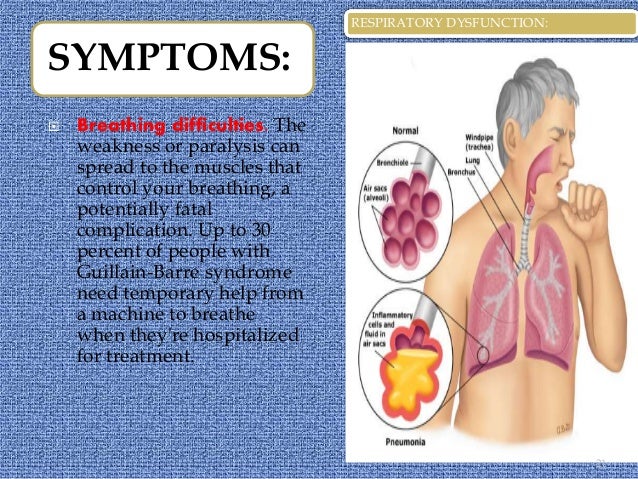



Guillian Barre Syndrome




Life Insurance With Guillain Barre Syndrome Everything You Need To Know At A Glance




Guillain Barre Syndrome Nclex Questions




Diagnosis And Scientific Physiotherapy Resources Facebook




Pdf Biological Drugs In Guillain Barre Syndrome An Update
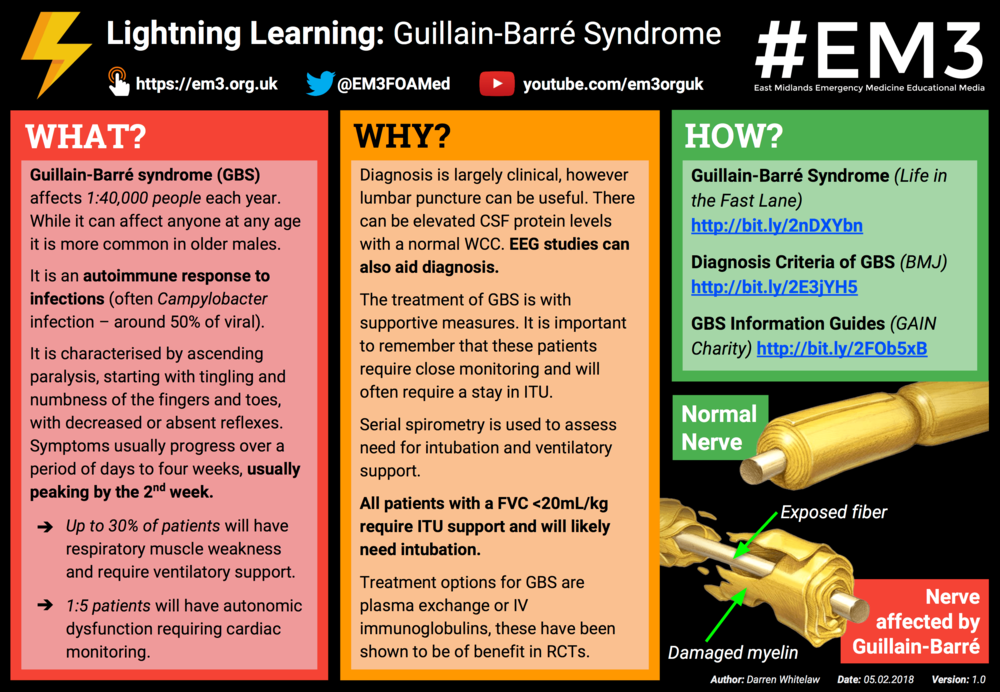



Lightning Learning Guillain Barre Syndrome Em3 East Midlands Emergency Medicine Educational Media



Emdocs Net Emergency Medicine Educationguillain Barre Syndrome Third Time S The Charm Emdocs Net Emergency Medicine Education
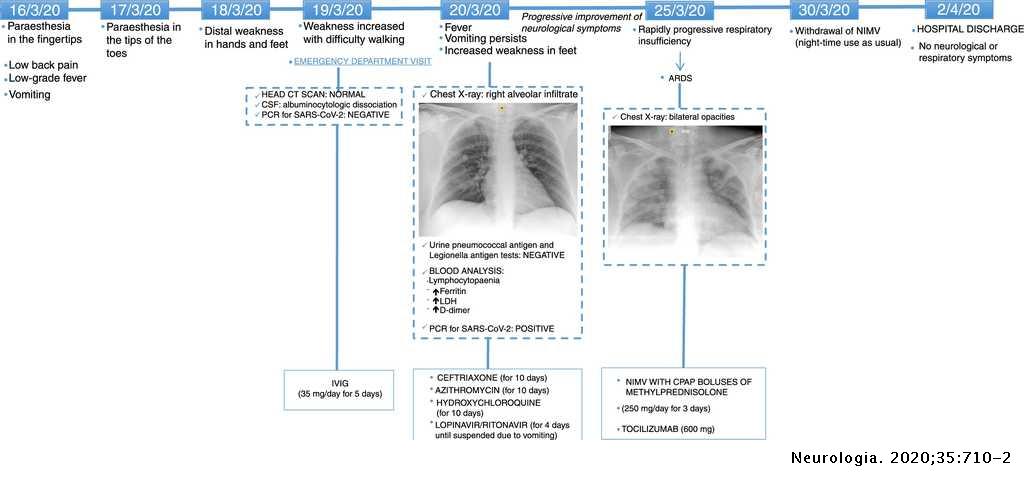



Guillain Barre Syndrome As The First Manifestation Of Sars Cov 2 Infection Neurologia English Edition



Guillain Barre Syndrome Gbs Emergency Medicine Kenya Foundation




Guillain Barre Syndrome Ppt Download




09 Conquering Guillain Barre Syndrome Gbs The Empowered Patient S Complete Reference Diagnosis Treatment Options Prognosis Two Cd Rom Set Pm Medical Health News Amazon Com Books




Guillain Barre Syndrome Treatment Related To Motor Speech Disorders Ppt Video Online Download
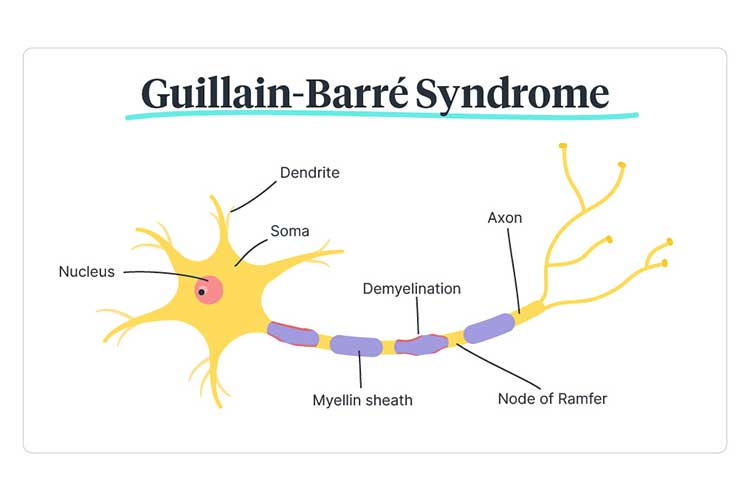



Guillain Barre Syndrome What Is Gbs Ausmed




Guillain Barre Syndrome The Lancet




A Novel Treatment Strategy For Severe Guillain Barre Syndrome Zipper Method Semantic Scholar




Infusion Therapy Treatment For Guillain Barre Syndrome Gbs Infusion Associates
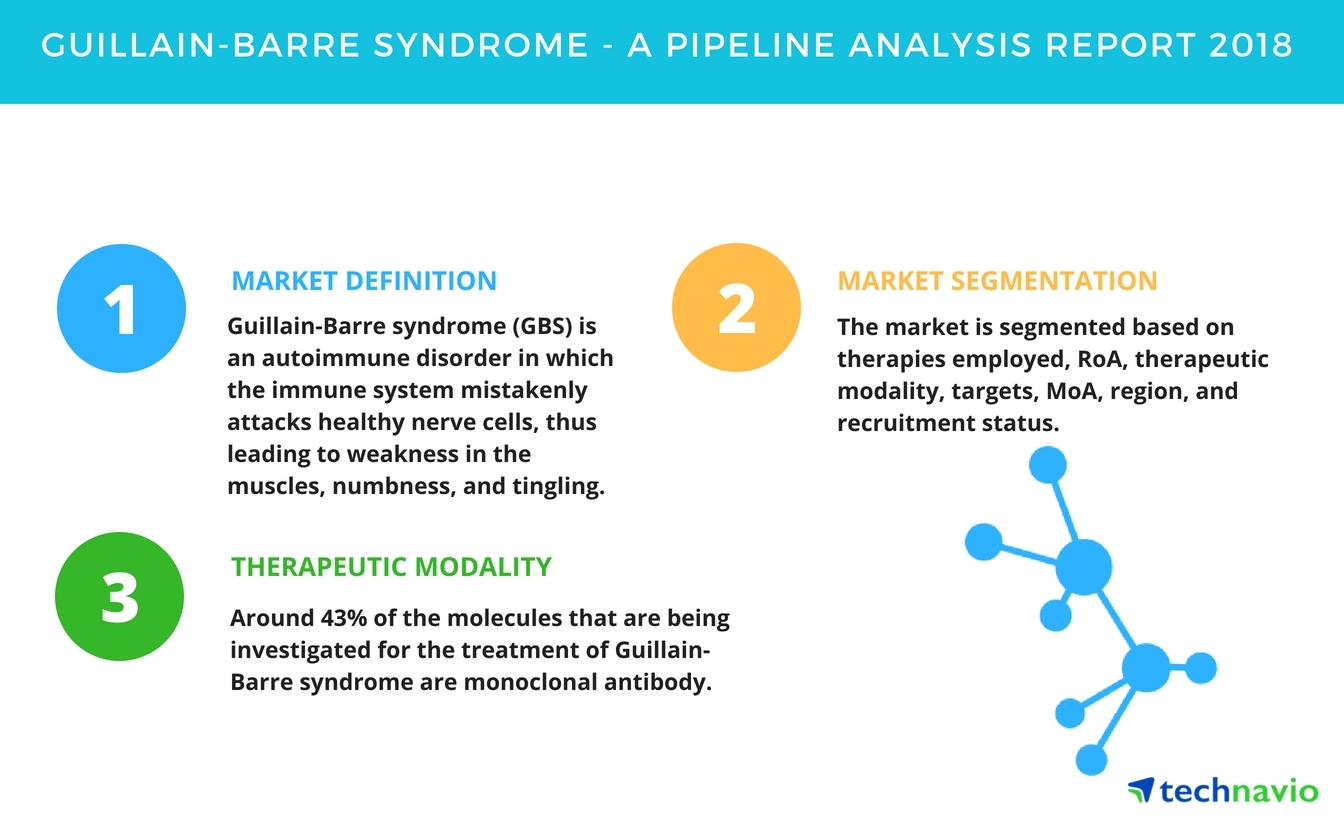



Guillain Barre Syndrome A Pipeline Analysis Report 18 Technavio Business Wire




Facial Diplegia With Hyperreflexia A Mild Guillain Barre Syndrome Variant To Treat Or Not To Treat Topic Of Research Paper In Clinical Medicine Download Scholarly Article Pdf And Read For Free On Cyberleninka
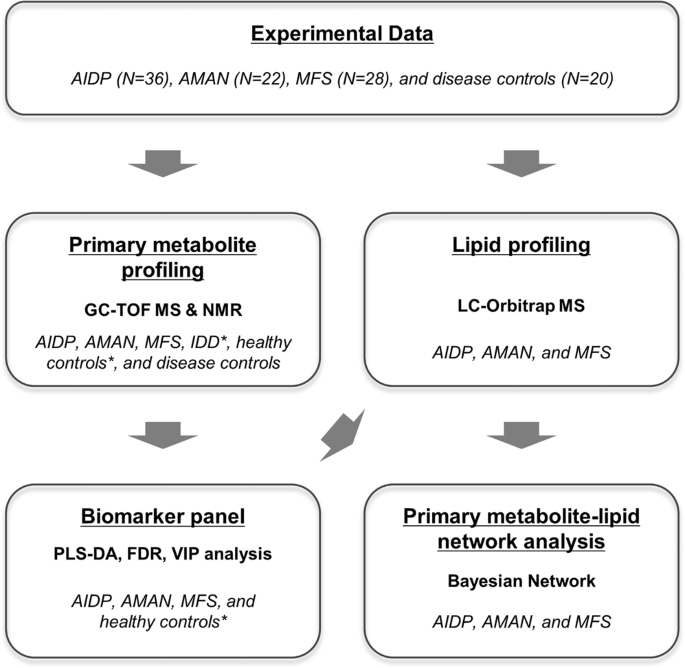



Integrative Metabolomics Reveals Unique Metabolic Traits In Guillain Barre Syndrome And Its Variants Scientific Reports




Treatment Dilemmas In Guillain Barre Syndrome Journal Of Neurology Neurosurgery Psychiatry




The Guillain Barre Syndrome Nejm
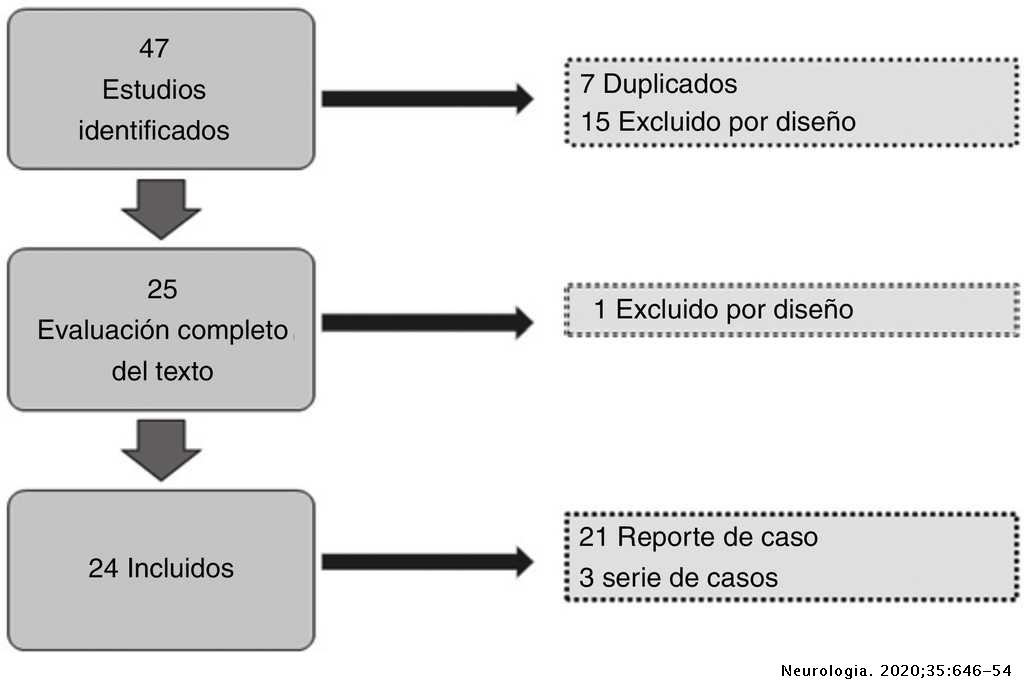



Relation Between Covid 19 And Guillain Barre Syndrome In Adults A Systematic Review Neurologia English Edition




Guillain Barre Syndrome Gbs




Guillain Barre Syndrome Mydr Com Au




Scielo Brasil Guillain Barre Syndrome In The Elderly Clinical Electrophysiological Therapeutic And Outcome Features Guillain Barre Syndrome In The Elderly Clinical Electrophysiological Therapeutic And Outcome Features




Guillain Barre Syndrome Rcemlearning




Guillain Barre Syndrome Physiopedia
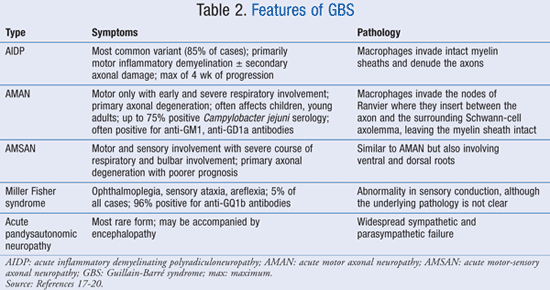



Guillain Barre Syndrome




Current Treatment Practice Of Guillain Barre Syndrome Neurology




Guillain Barre Syndrome American Family Physician
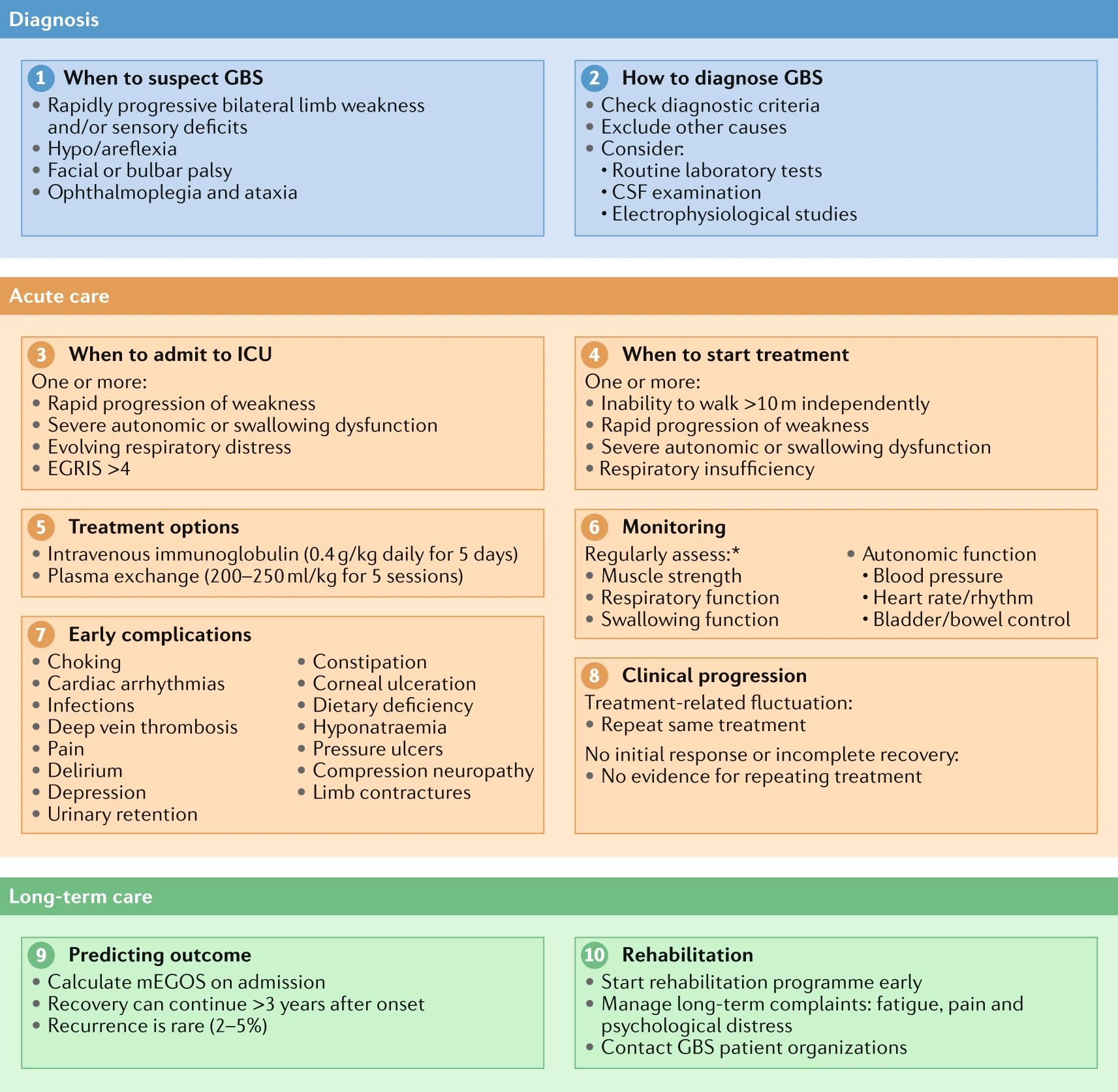



Nature Reviews Neurology Publishes Zikaplan Supported Landmark Paper Diagnosis And Management Of Guillain Barre Syndrome In Ten Steps Zikaplan




Global Guillain Barre Syndrome Treatment Market 19 23 Recent Approvals Of Immunoglobulins To Boost Demand Technavio Business Wire
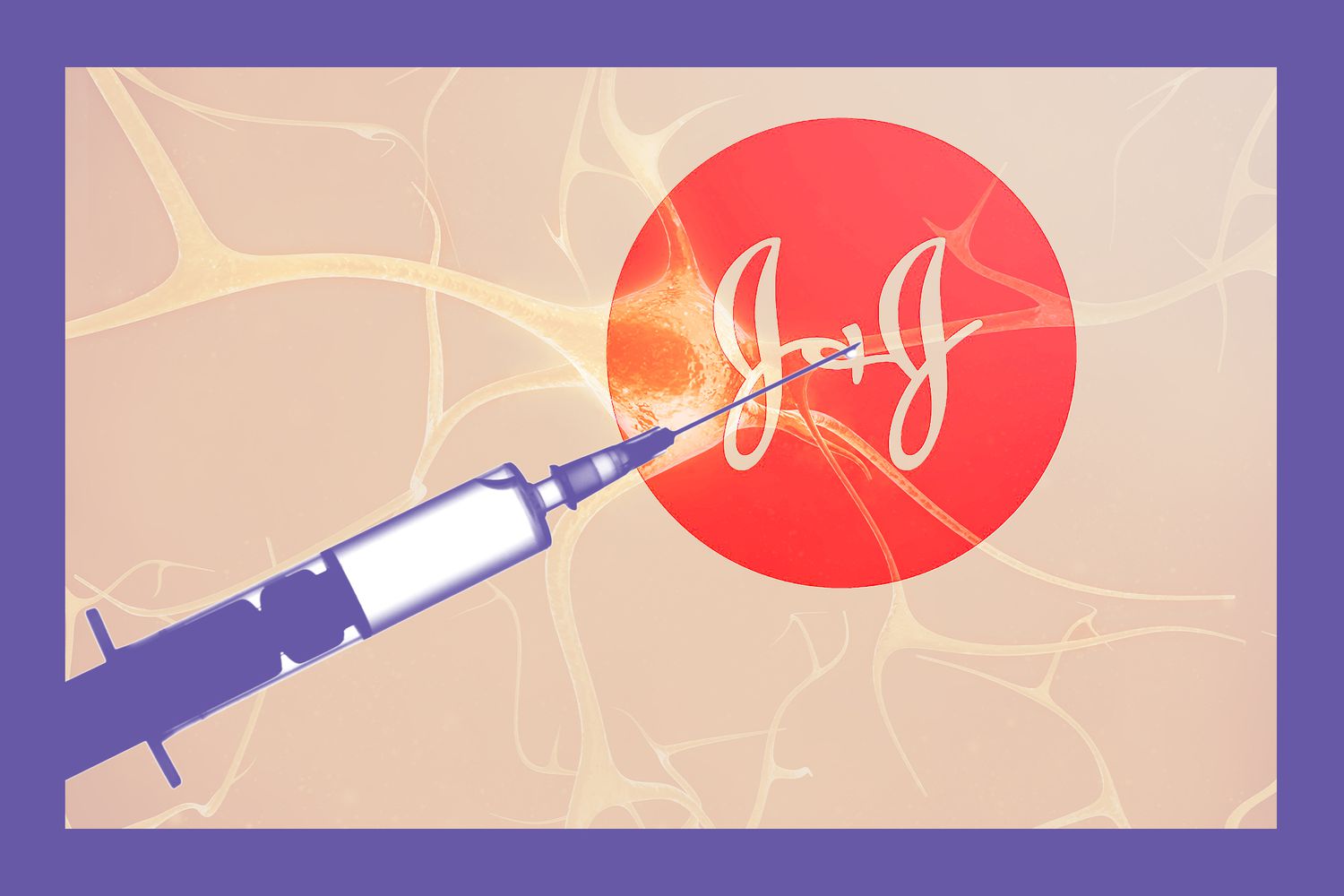



The Link Between The Johnson Johnson Vaccine And Guillain Barre Syndrome Shape



Http Www Scielo Org Co Pdf Anco V32n3 V32n3a02 Pdf




Guillain Barre Syndrome Gbs From Vaccines Us Vaccine Law Vaccine Injury Attorneys




Pdf Pharmacoeconomics Of Therapy For Guillain Barre Syndrome Plasma Exchange And Intravenous Immunoglobulin Ching Piao Tsai Academia Edu




Guillain Barre Syndrome American Family Physician




New Report Examines The Growth Of Guillain Barre Syndrome Market Forecast To 25 By Markettrends Issuu




Guillain Barre Syndrome Gbs Pathogenesis C F Investigations Treatment Dr Saykat Youtube



Http Www Bioline Org Br Pdf Pe



Http Svmi Web Ve Wh Documentos Guillain Barre syndrome and variants Pdf
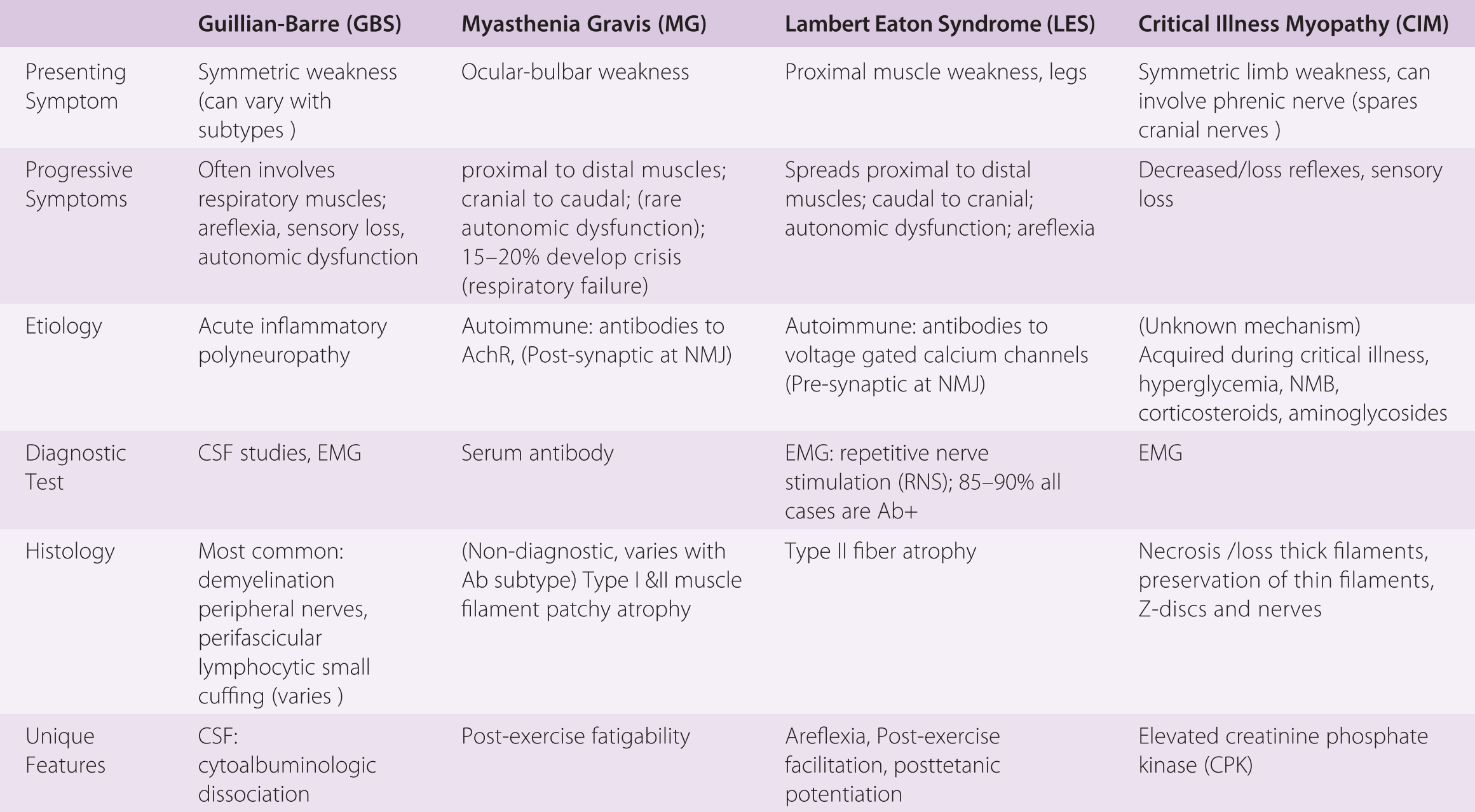



Guillain Barre Syndrome And Myasthenia Gravis Chapter 43 Gupta And Gelb S Essentials Of Neuroanesthesia And Neurointensive Care
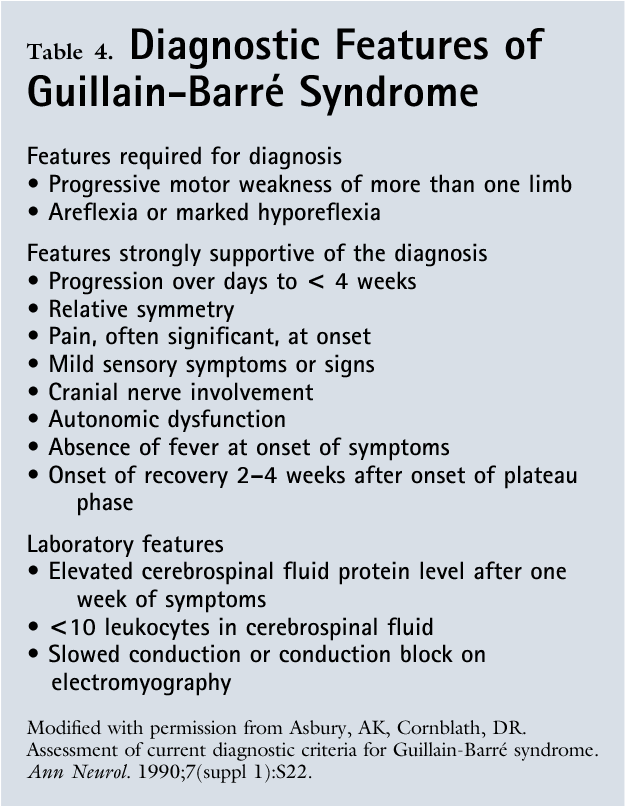



Pdf Guillain Barre Syndrome Semantic Scholar




Current Treatment Practice Of Guillain Barre Syndrome Neurology




Treatment Options For Guillain Barre Syndrome Gbs A Comparative Assessment Of Treatment Efficacy Between Intravenous Immune Globulin Ivig With Plasmaphoresis Pafmj




Guillain Barre Syndrome
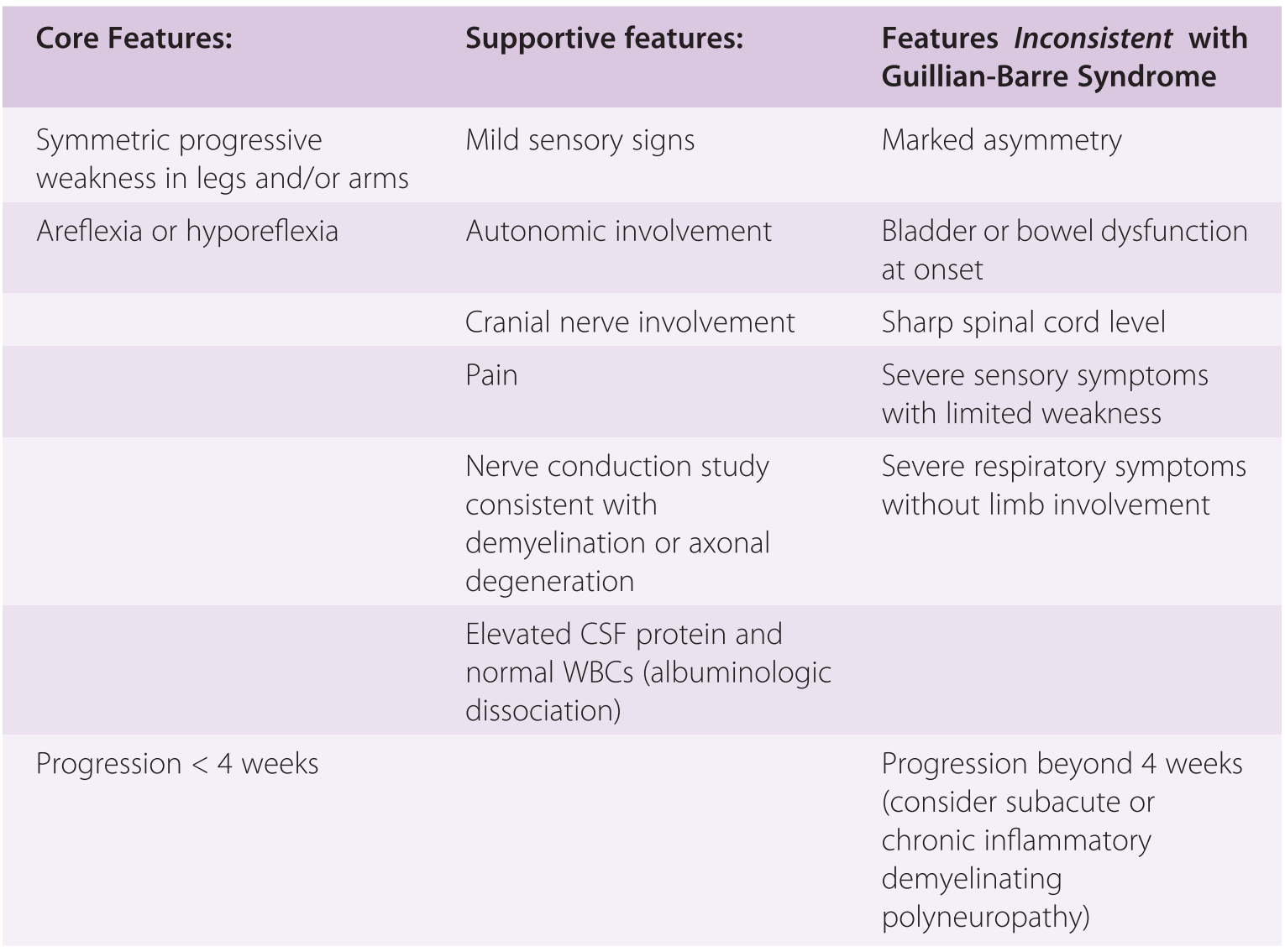



Guillain Barre Syndrome And Myasthenia Gravis Chapter 43 Gupta And Gelb S Essentials Of Neuroanesthesia And Neurointensive Care




The Management Of Guillain Barre Syndrome Sciencedirect




Guillain Barre Syndrome And Myasthenia Gravis Chapter 43 Gupta And Gelb S Essentials Of Neuroanesthesia And Neurointensive Care




References In Clinical Features Pathogenesis And Treatment Of Guillain Barre Syndrome The Lancet Neurology




The Guillain Barre Syndrome Nejm
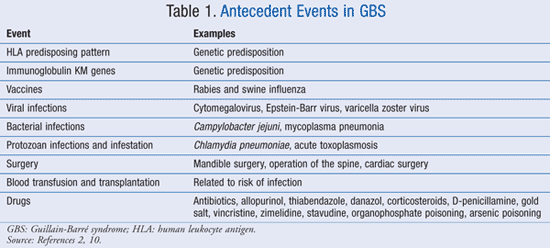



Guillain Barre Syndrome




Pdf Childhood Guillain Barre Syndrome Comparing Intravenous Immunoglobulin Treatment With Supportive Care Semantic Scholar




Guillain Barre Syndrome The Lancet




Guillain Barre Syndrome Reeve Foundation




Guillain Barre Syndrome G B S India Posts Facebook




What Is Guillain Barre Syndrome Mass4d Foot Orthotics
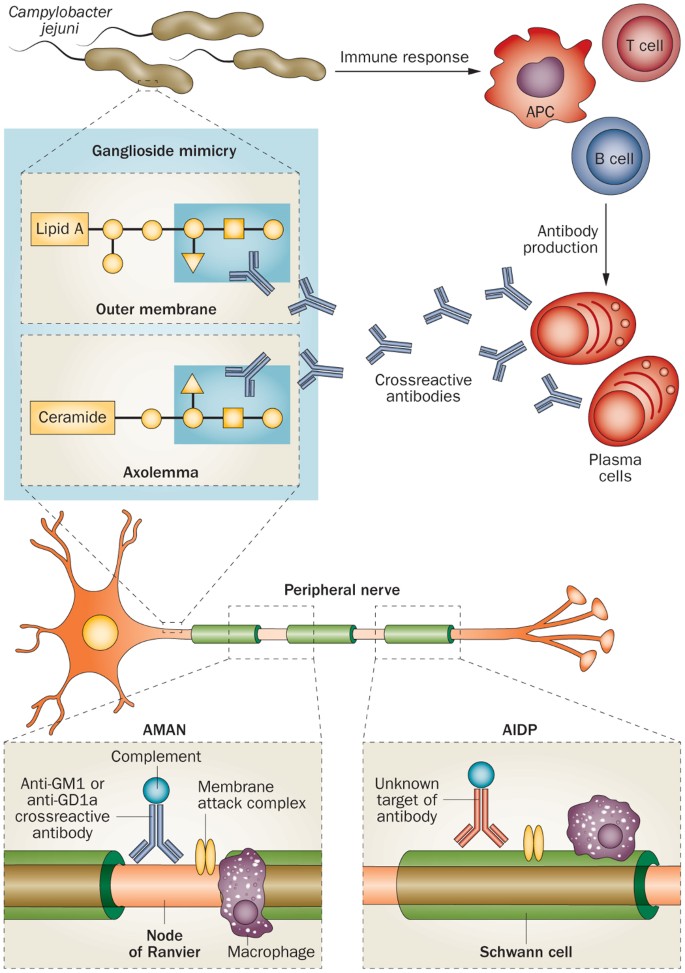



Guillain Barre Syndrome Pathogenesis Diagnosis Treatment And Prognosis Nature Reviews Neurology




Pdf Efficacy Of Therapies In The Treatment Of Guillain Barre Syndrome A Network Meta Analysis




New Report Examines The Growth Of Guillain Barre Syndrome Market Forecast To 25 By Markettrends Issuu




Comparison Of Admission Parameters Of The Patients With Guillain Barre Download Scientific Diagram




Current Treatment Practice Of Guillain Barre Syndrome Neurology



Www n Com Guidelines Home Getguidelinecontent 116
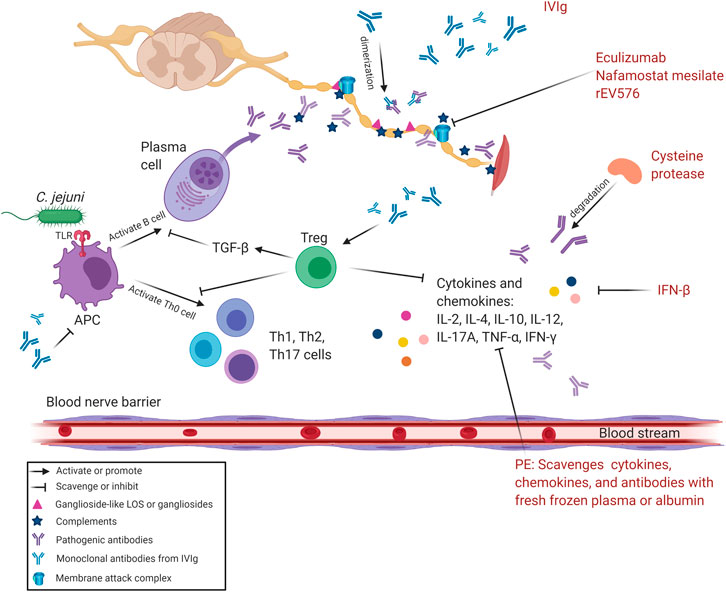



Frontiers Intensive Care And Treatment Of Severe Guillain Barre Syndrome Pharmacology




What Is Guillain Barre Syndrome Nabta Health




Guillain Barre Syndrome Survivors Share Experience




What Is Guillain Barre Syndrome Symptoms Causes Diagnosis Treatment And Prevention Everyday Health




Guillain Barre Syndrome And The Flu Vaccine How To Receive Compensation
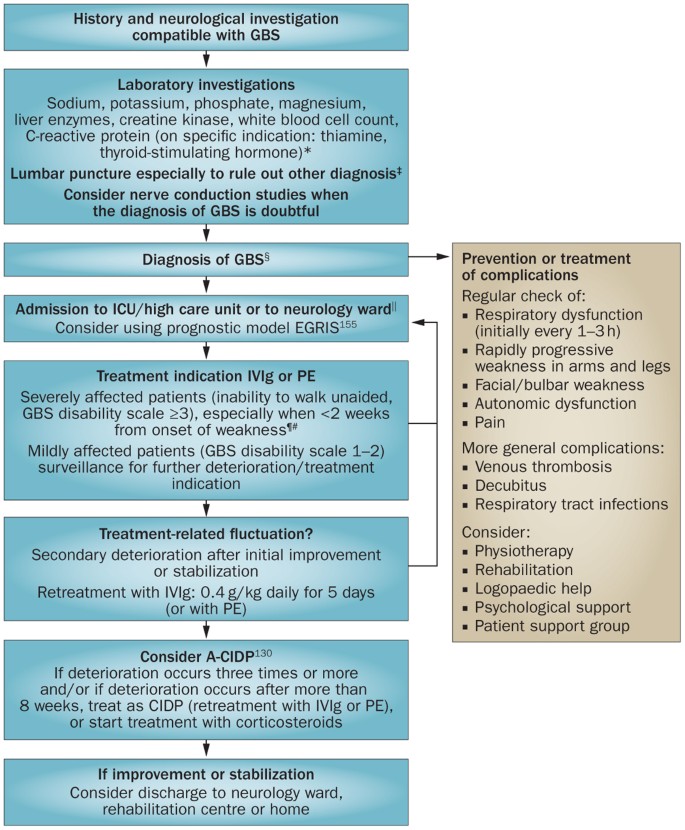



Guillain Barre Syndrome Pathogenesis Diagnosis Treatment And Prognosis Nature Reviews Neurology




Guillain Barre Syndrome And Its Variants As A Manifestation Of Covid 19 A Systematic Review Of Case Reports And Case Series Journal Of The Neurological Sciences
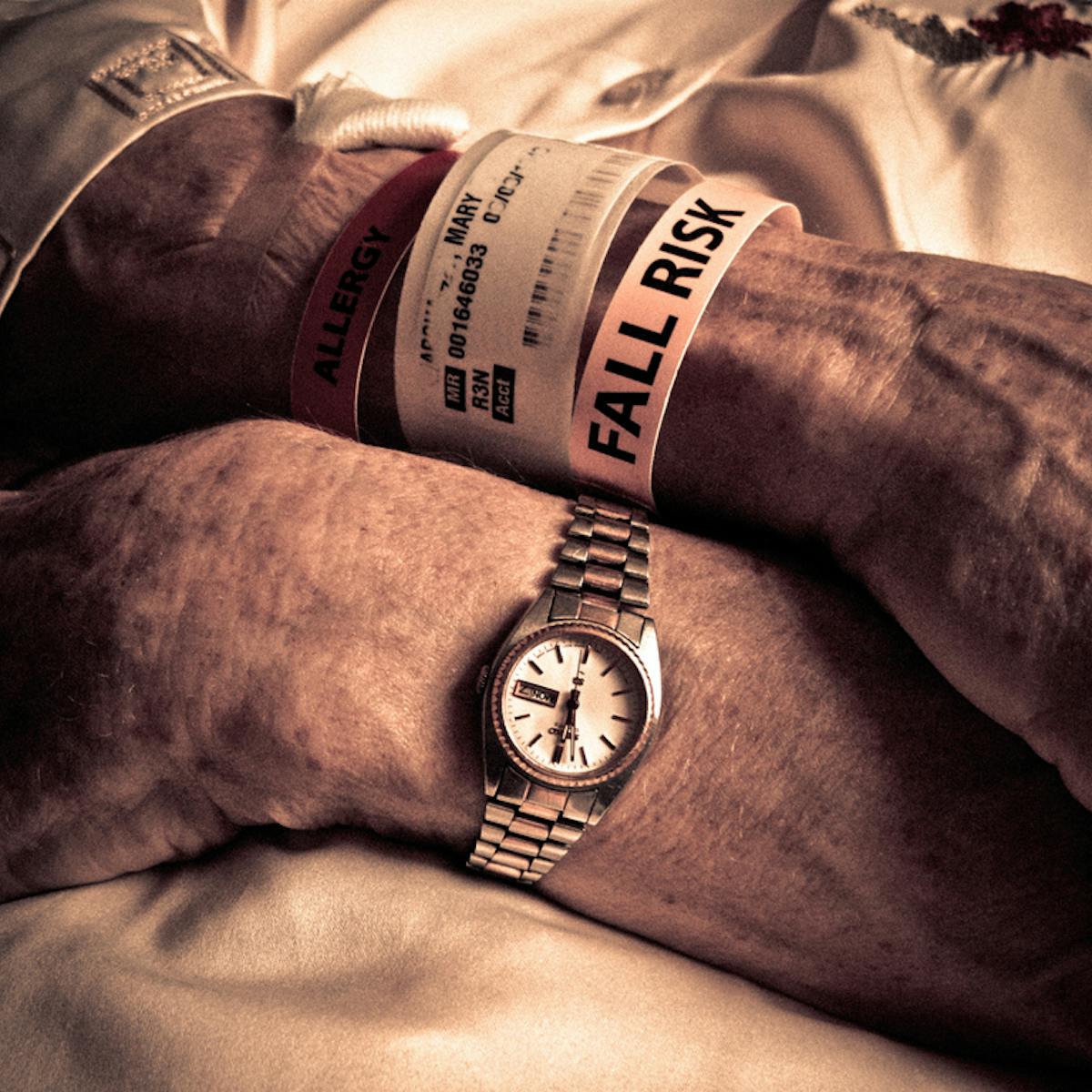



Explainer What Is Guillain Barre Syndrome And Is It Caused By The Zika Virus



1
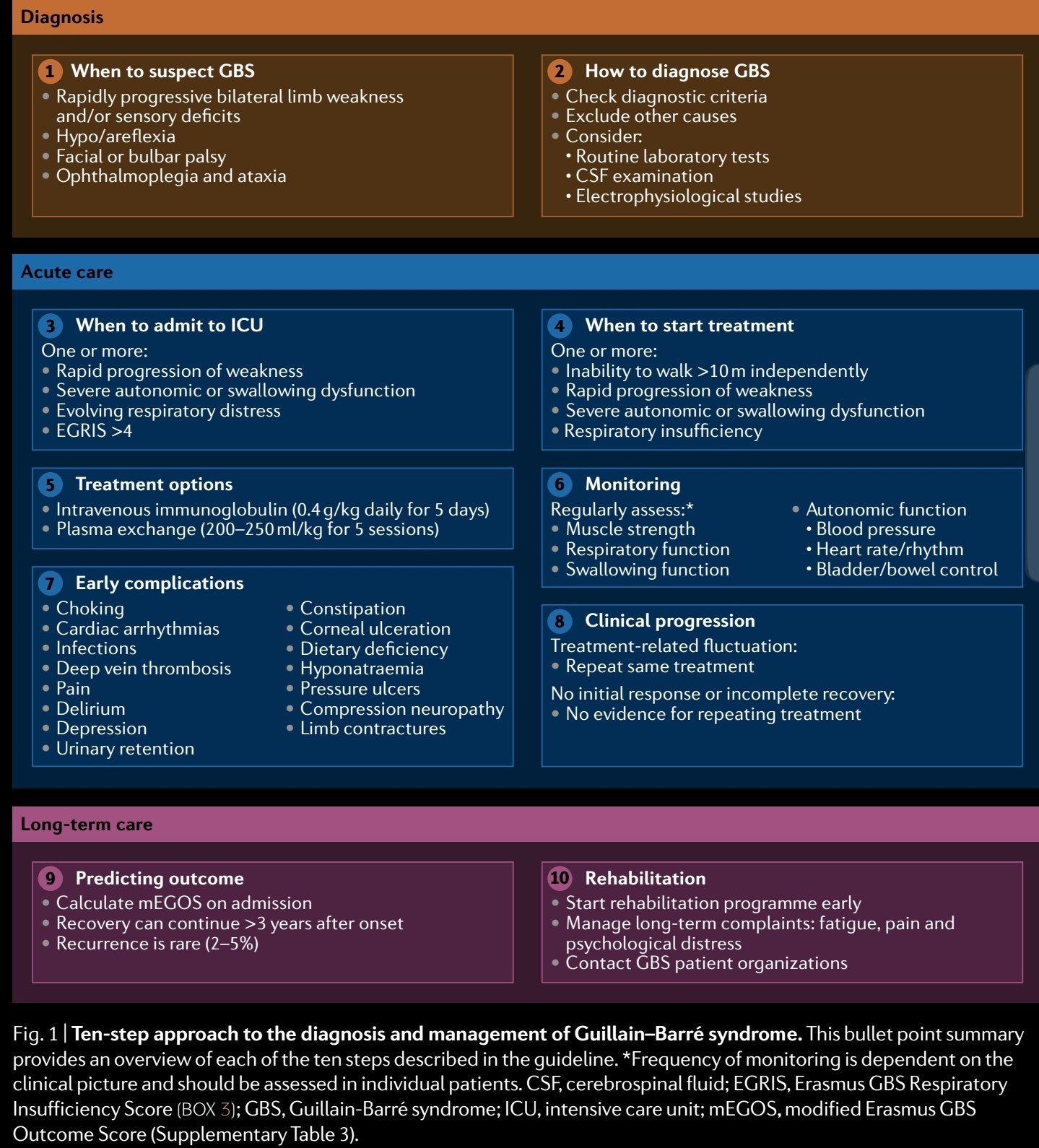



Mark Ramzy Do Emt P 10 Steps To Managing Guillain Barre Syndrome 1 When To Suspect 2 How To Diagnose 3 When To Admit To Icu 4 When To Start Treatment 5 Treatment Options 6 Monitoring 7 Early Complications




Guillain Barre Syndrome Pontiac Mi Euro Therapies




Therapeutic Plasma Exchange In Guillain Barre Syndrome And Chronic Inflammatory Demyelinating Polyradiculoneuropathy Sciencedirect




Guillain Barre Syndrome The Lancet



0 件のコメント:
コメントを投稿